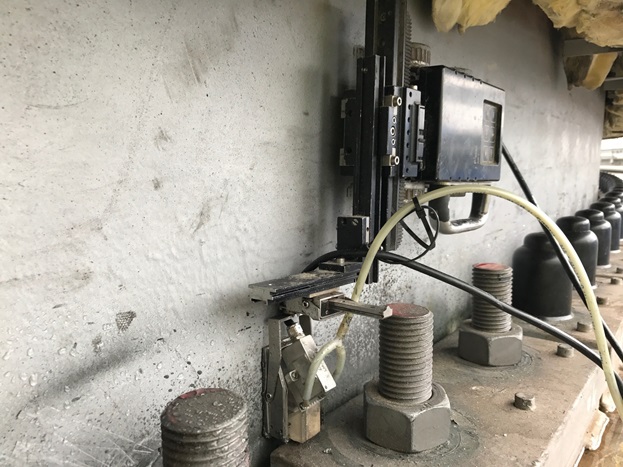Tank Welding Inspection: Making Sure Long-Term Longevity and Security
Tank Welding Inspection: Making Sure Long-Term Longevity and Security
Blog Article
Comprehensive Guide to Effective Storage Tank Welding Assessment Techniques and Ideal Practices for Quality Control
In the realm of storage tank welding, extensive examination methods are vital for safeguarding architectural stability and making certain compliance with sector regulations. As we check out these important elements, it becomes clear that an aggressive evaluation technique is not just helpful, yet necessary for operational success in settings dealing with unsafe products.
Significance of Tank Welding Inspection

Tank welding examination works as a preventative action, recognizing potential problems such as fractures, porosity, or incorrect joint penetration before they intensify into severe problems. Regular assessments not only follow sector laws and standards but likewise enhance the long life of the storage tanks, lowering the need for expensive repair work or replacements.

Visual Evaluation Strategies
Utilizing systematic aesthetic assessment techniques is essential for examining the quality and honesty of bonded joints in storage tanks. This technique functions as the very first line of protection in identifying potential flaws such as cracks, undercuts, and inadequate infiltration. The inspector ought to approach the task with a keen eye, using ideal tools like multiplying glasses, flashlights, and mirrors to improve visibility.
During the examination process, the assessor ought to evaluate the weld account, ensuring it sticks to defined criteria and guidelines (Tank Welding Inspection). This consists of taking a look at the grain size, height, and combination with the base product. Inspectors should additionally pay attention to the bordering locations for signs of thermal distortion or contamination that might affect the weld's efficiency
Paperwork of findings is crucial; examiners ought to tape-record any anomalies, classifying them by intensity for additional examination. This organized method not only aids in immediate flaw recognition but also adds to lasting high quality assurance by making certain conformity with market requirements. Routine training and calibration of aesthetic evaluation strategies even more improve the dependability of analyses, ultimately causing more secure and a lot more durable tank structures.
Non-Destructive Examining Techniques
Non-destructive testing (NDT) methods are frequently utilized in storage tank welding evaluations to evaluate the integrity of welded joints without compromising their architectural honesty. These methods next are vital for recognizing flaws such as cracks, spaces, and inclusions that could cause catastrophic failures if left undiscovered.
Usual NDT methods include ultrasonic testing (UT), which utilizes high-frequency audio waves to find inner imperfections; radiographic testing (RT), employing X-rays or gamma rays to imagine weld structures; and magnetic bit screening (MT), which discloses surface and near-surface stoppages in ferromagnetic products (Tank Welding Inspection). Fluid penetrant screening (PT) is also widely used, Get More Information efficient in finding surface-breaking issues by using a fluorescent or shade comparison dye
Each NDT method has its particular applications and benefits, making it necessary for assessors to choose the suitable strategy based on the material and the kind of weld being assessed. The assimilation of these NDT methods into the examination process enhances the overall quality guarantee framework, guaranteeing that bonded containers fulfill security and performance standards. Inevitably, NDT plays a crucial function in maintaining the integrity and long life of container frameworks in numerous commercial applications.

Paperwork and Coverage
Ensuring extensive paperwork and reporting throughout container welding evaluations is essential for keeping compliance with market criteria and helping with reliable interaction amongst stakeholders. Appropriate paperwork works as a thorough record of inspection activities, findings, and any type of corrective actions taken throughout the welding procedure. This details is important not only for high quality assurance however also for audits and regulatory evaluations.

A well-structured evaluation record should consist of information such as the day of evaluation, names of assessors, welding procedures utilized, products utilized, and any kind of deviations from developed requirements. Additionally, photographs and layouts can improve the clarity of the report, giving aesthetic context to the findings. It is likewise vital to document any type of non-conformities along with their resolution, making certain that all stakeholders are notified of potential dangers and the actions taken to mitigate them.
Moreover, keeping a central data source for all examination records enables simple retrieval and review, cultivating a culture of transparency and accountability. By prioritizing precise documents and reporting, organizations can not just promote quality control yet additionally enhance their track record within the market, inevitably bring about improved safety and security and operational effectiveness.
Continuous Enhancement Practices
Continual renovation practices are essential for boosting the top quality and efficiency of storage tank welding examinations. One efficient method involves routine training and upskilling of examination personnel to stay abreast get redirected here of the newest welding innovations and requirements.
Furthermore, making use of data-driven evaluation allows organizations to track assessment results, identify trends, and pinpoint areas for enhancement. Employing devices such as origin analysis can help in comprehending the underlying problems leading to defects, making it possible for targeted interventions. In addition, obtaining responses from evaluation groups and stakeholders produces a collaborative setting that urges cutting-edge options.
Integrating sophisticated innovations, such as automatic assessment systems and real-time surveillance, can considerably improve the accuracy and rate of inspections. Regular audits of the examination processes also add to a society of responsibility and continual improvement. Inevitably, these continual renovation methods not just raise the quality of container welding inspections yet also add to overall functional excellence and client complete satisfaction.
Final Thought
In verdict, reliable storage tank welding inspection is critical for guaranteeing the structural stability and safety and security of storage space systems, particularly those dealing with hazardous materials. Utilizing a combination of visual evaluation strategies and non-destructive screening methods facilitates the early identification of defects, thus preserving conformity with market standards.
Report this page